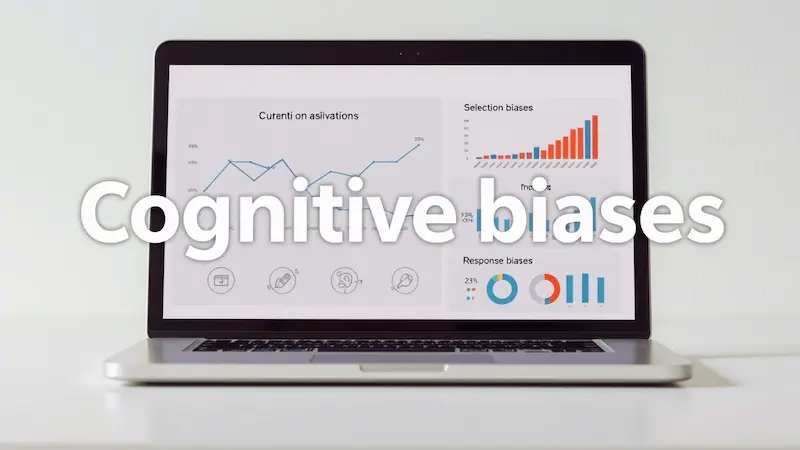Cognitive biases are systematic patterns of thinking that can significantly impact the validity and reliability of psychological research. In digital experiments, these biases present unique challenges and opportunities for researchers.
Common Cognitive Biases in Online Studies
1. Selection Bias
Online participants often self-select into studies, creating a non-representative sample. This is particularly pronounced in:
- Social media recruitment
- Voluntary participation platforms
- Convenience sampling methods
2. Response Bias
Digital interfaces can amplify certain response tendencies:
- Social desirability bias: Participants may respond in ways they perceive as socially acceptable
- Acquiescence bias: Tendency to agree with statements regardless of content
- Extreme response bias: Preferring extreme response options
3. Attention and Engagement Biases
The digital environment introduces unique attention challenges:
- Multitasking during experiments
- Shortened attention spans
- Device-specific interaction patterns
Mitigation Strategies
Design Considerations
- Randomization: Implement proper randomization to reduce selection effects
- Attention checks: Include validation questions to ensure engagement
- Balanced scales: Use balanced response options to minimize acquiescence bias
Technical Solutions
- Adaptive timing: Adjust presentation timing based on individual response patterns
- Cross-device compatibility: Ensure consistent experience across platforms
- Data quality metrics: Implement real-time quality assessment
Statistical Approaches
- Bias detection algorithms: Use statistical methods to identify biased responses
- Weighting procedures: Apply appropriate weights to correct for selection bias
- Sensitivity analyses: Test robustness of findings across different assumptions
Best Practices for Researchers
Pre-experiment Phase
- Conduct pilot studies to identify potential bias sources
- Develop clear inclusion/exclusion criteria
- Create standardized instructions and interfaces
During Data Collection
- Monitor participant engagement metrics
- Implement real-time quality controls
- Document technical issues and environmental factors
Post-experiment Analysis
- Apply appropriate statistical corrections
- Report potential limitations and bias sources
- Consider replication studies with different populations
Future Directions
The field continues to evolve with new technologies and methodologies:
AI-Powered Bias Detection
Machine learning algorithms are being developed to:
- Identify patterns indicative of biased responding
- Predict participant engagement levels
- Suggest real-time interventions
Virtual Reality Experiments
VR environments offer new possibilities for:
- Creating more controlled experimental conditions
- Reducing certain types of response bias
- Measuring implicit behaviors and responses
Longitudinal Digital Studies
Extended observation periods can help:
- Identify and account for temporal biases
- Track individual difference patterns
- Build more robust participant profiles
Conclusion
Understanding and addressing cognitive biases in digital experiments is crucial for advancing psychological science. By combining thoughtful experimental design, appropriate statistical methods, and emerging technologies, researchers can conduct more valid and reliable studies in the digital age.
The key is to recognize that biases are not merely obstacles to overcome, but integral aspects of human cognition that can provide valuable insights into psychological processes.
What strategies have you found most effective for addressing cognitive biases in your research? Share your experiences and contribute to our growing understanding of digital psychology research.
